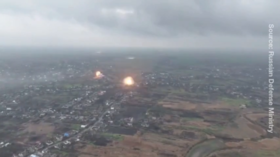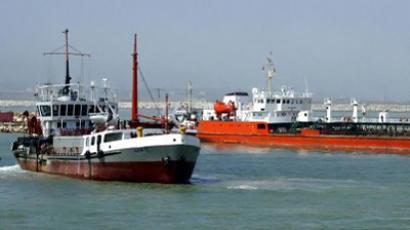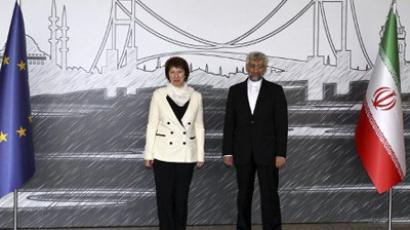Pentagon encircles Iran: Victory would take 3 weeks
As the US beefs up its military presence in the Persian Gulf region, Pentagon strategists estimate that they would need less than a month to defeat Iranian forces should a military conflict take place.
US Central Command (CENTCOM) believes it can destroy or significantly degrade Iran's conventional armed forces in about three weeks using air and sea strikes, a defense source told The Washington Post. “We plan for any eventuality we can and provide options to the president,” Army Lt. Col. T.G. Taylor, a spokesman at CENTCOM told the newspaper. “We take our guidance from the secretary of defense and from our civilian bosses in [Washington] DC. So any kind of guidance they give us, that’s what we go off of [sic].”The American military has been building up its presence in the region amid rising tension in the area.The US Navy currently has two aircraft carriers deployed near Iran and is upgrading mine-detection and removal capabilities.The US Air Force recently dispatched a number of F-22 Raptor strike fighters to a base in the United Arab Emirates. The move caused backlash from Tehran, which said Wednesday it threatened regional stability.Deploying a “floating base” in the Persian Gulf – a converted transport ship that would serve as a semi-stationary base of operations for the US military – is also on the table. USS Ponce is expected to host mine-sweeping helicopters, speed boats and probably commando teams.The Pentagon has also intensified training of elite troops of its allies in the region. The members of the Joint Special Operations Task Force-Gulf Cooperation Council commando team, who serve as instructors, may be ordered to go into the field as well, should such a need arise.The measures are taken as contingency for possible attack by Iran on US troops or blocking of the Strait of Hormuz, the vital oil transit route, the US says.CENTCOM says there are about 125,000 US troops in close proximity to Iran. The majority of them – 90,000 – are deployed in or around Afghanistan. Some 20,000 soldiers are ashore elsewhere in the Near East region; and a variable 15,000 to 20,000 serve on naval vessels.Oil battlefrontThe military threat is just part of the mounting pressure on Tehran. Washington says it would use force only as a measure of last resort and is instead focusing on economic pressure.On Tuesday, US President Barack Obama signed an order giving the Treasury Department more power to impose financial sanctions against those trading with Iran."Treasury now has the capability to publicly identify foreign individuals and entities that have engaged in these evasive and deceptive activities, and generally bar access to the US financial and commercial systems," the department said in a statement. The US and the EU have issued a ban on buying Iran-produced crude in a bid to cripple the country’s export-dependent economy. Part of this effort involves sanctions against companies and institutions engaged in the oil trade with Iran financially. They are banks transferring payment for the crude or firms insuring tankers transporting Iranian oil.The Iranian oil industry is not suffering from sanctions alone. The country’s Oil Ministry reported last week that it had finally managed to contain a cyber attack on the industry’s facilities.“The software attack has been fully contained and controlled with the help of experts three days after it was hit,” Iran’s deputy oil minister for engineering affairs, Hamdollah Mohammadnejad, told the state-run Mehr news agency.In 2010 a malicious computer worm called Stuxnet damaged computer software at Iran’s uranium enrichment facilities. Some computer security experts said the malware was the work of a highly-professional hacker team, which was probably provided with know-how by US or Israeli governments.Western countries and Israel suspect Iran of trying to build a nuclear bomb and are pressuring it to stop enrichment of uranium. Tehran insists it is pursuing a civilian nuclear power program only, which it is entitled to do as a sovereign state. The row has escalated last year after the publication of a controversial report by UN’s nuclear watchdog, which Iran’s opponents used to justify issuing more sanctions.














